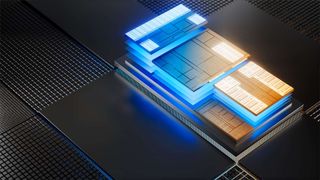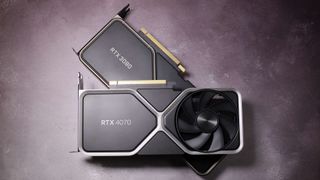Intel's Arrow Lake specs break cover: Say hello to DDR5-6400, wave goodbye to DDR4 and possibly Hyper-Threading
The 800-series motherboard chipset will get lots of goodies like USB4, DP2.0, and HDMI 2.1

It's fair to say that all of us in the PC Gamer office were somewhat disappointed with Intel's 14th generation of desktop Core CPUs. Fast as you could possibly want, sure, but only a few percent better than the previous gen, and still just as power hungry and hot as ever. It was to be expected, though, considering that it wasn't a new architecture. What we're all waiting for is to see what the real successor, Arrow Lake, will be like and the first hints of it have come to light: Basically, it's like a Raptor-like version of Meteor Lake. Oh.
Well, that's according to a relatively old Intel document, leaked on X (via Wccftech). It provides some details on a pre-alpha Arrow Lake (ARL-S) processor, plus the motherboard socket and chipset it will use. The very fact that it's pre-alpha means that it's a very early engineering sample, which is why the document states that the sample question should only be used with the P-cores disabled!
But there's still lots of interesting stuff to read. For example, the desktop chip has eight P-cores, 16 E-cores, and 1 Low Power E-core, written in the short form of 8+16+1. Arrow Lake will be a tiled structure, just like Meteor Lake, and the biggest one of those has six P-cores, eight E-cores, and two LP E-cores.
One thing that immediately stands out though is that the new P-cores are stated as '8 IA cores/8 threads', which potentially means that Intel is removing Hyper-Threading support. This feature lets one core take on two threads at a time, but not processed in parallel. Think of processor cores being like a long production line, with many stages in them; threads aren't running on all of the stages at once, so those that are ideal can be allocated to another thread.
The last time Intel did something like this was in its 9th generation of Core chips (Coffee Lake), with the i7 9700K and i9 9900K both having eight cores, but only the latter had Hyper-Threading and thus supported twice the number of threads.


There's no indication that this is what all Arrow Lake CPUs will be like but Intel has patented a technology it calls Rentable Units. This involves scanning threads and checking out the relative workloads in the list of instructions. Demanding stuff is then sent to the P-cores, and the easier stuff is shipped over to the E-cores. Essentially, it's a thread scheduler but one that's a lot more advanced than in current Intel chips.
This pre-alpha processor has the same 125W TDP/PL1 as current top-end Core chips but there's nothing about the PL2, aka the maximum power limit that can be sustained for a while. That's far more important than the base level and it can ramp up to over 250W in the case of the i9 14900K.
The biggest gaming news, reviews and hardware deals
Keep up to date with the most important stories and the best deals, as picked by the PC Gamer team.
Reading between the lines, Arrow Lake is looking rather like a Raptorised version of Meteor Lake, but earlier rumours suggest that 15th gen Core chips will still be pretty beefy, with 3MB of L2 cache per P-core and up to 32 E-core configurations.
We've also been given a sneaky peek into the Arrow Lake socket and 800-series motherboard chipset, too. The former will take an LGA-1851 format (the current one is LGA-1700) and support up to DDR5-6400, with DDR4 being dropped altogether. That's a big increase in memory speed, as 14th gen CPUs only support up to DDR5-5600, by default.

Best CPU for gaming: The top chips from Intel and AMD.
Best gaming motherboard: The right boards.
Best graphics card: Your perfect pixel-pusher awaits.
Best SSD for gaming: Get into the game ahead of the rest.
Joining the improvements are the number of PCIe lanes in the CPU and chipset. The former will have 24 in total: 16 PCIe 5.0 for the graphics slot, four of the same version for NVMe storage, and four more lanes of PCIe 4.0 (which will probably also be for an SSD). Motherboards sporting the forthcoming 800-series chipsets will have up to 24 PCIe 4.0 lanes, with eight of them set aside for M.2 drives.
The rest are for other devices, such as expansion cards in PCIe x4 or x1 slots. USB4 support is finally there, along with up to ten USB 3.2 Gen 2x1 ports, which can be combined into Gen 2x2 ones, to a maximum of four. Oh, and monitors are getting a bit of love too, with DisplayPort 2.0 (UHBR20 mode), HDMI 2.1, and Thunderbolt 4 all in the mix.
So what to make of all of this? I think it's still too early to tell what the final Arrow Lake specifications are going to be like, but the improvements to the memory controller and the significant overhaul of the motherboard chipset are very encouraging. I can't imagine that any of this will come cheap, but if AMD's Zen 5 appears around the same time, then a nice price war will be very handy indeed.

Nick, gaming, and computers all first met in 1981, with the love affair starting on a Sinclair ZX81 in kit form and a book on ZX Basic. He ended up becoming a physics and IT teacher, but by the late 1990s decided it was time to cut his teeth writing for a long defunct UK tech site. He went on to do the same at Madonion, helping to write the help files for 3DMark and PCMark. After a short stint working at Beyond3D.com, Nick joined Futuremark (MadOnion rebranded) full-time, as editor-in-chief for its gaming and hardware section, YouGamers. After the site shutdown, he became an engineering and computing lecturer for many years, but missed the writing bug. Cue four years at TechSpot.com and over 100 long articles on anything and everything. He freely admits to being far too obsessed with GPUs and open world grindy RPGs, but who isn't these days?
Most Popular






